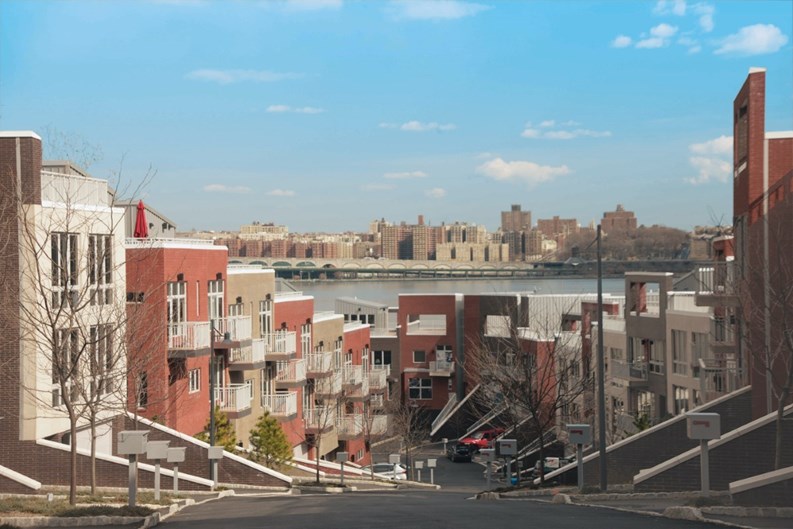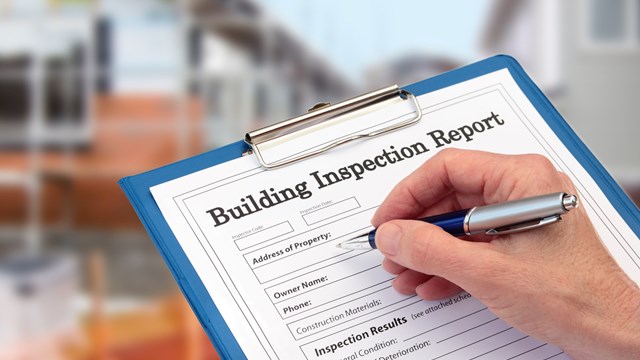Nestled on three and a half miles on the Hudson River at the foot of the Palisades, Edgewater borough is a small nugget of New Jersey’s Gold Coast. With a growing, young population looking for proximity to Manhattan, as well as a community they can call their own; Edgewater is widely considered one of Northern New Jersey’s hot spots.
It wasn’t always this way. Lois Fein, a Realtor with Classic Realty Group in Fort Lee and a former member of Edgewater’s council and zoning board, says that when she first moved to Edgewater in 1984, there was little more to the place than old railroad tracks, factories and construction yards.
“It was an old industrial community with its fabulous waterfront location,” she says. So she ran for office, determined to help turn Edgewater into the thriving community it is today with some homes worth in excess of $1 million. “I said somebody has to do it. So I jumped in and said, ‘OK, if I’m going to live here I want to make it special.’”
Making Strides
But when she moved there, even finding a place to buy food was a challenge, since a Japanese supermarket was the only option.
“I had to go to a different community,” Fein says. “When I first moved here, if you said you lived in Edgewater, they said, ‘Where is that?’ Edgewater was not on the map.”
Now, Edgewater is home to a Pathmark and a Whole Foods, and word of the community has spread.
“I remember the first time somebody [outside of Edgewater] told me, ‘That’s a nice community,’” she says. “I was in South Jersey, and somebody said, ‘Oh I know Edgewater,’ and I said, ‘Good. We finally did it.’”
In New Jersey, a municipality’s designation doesn’t always provide an idea of what the township looks like. Terms like “city” and “town” describe local governments (taking in factors like the size of the council). As a result, many “cities” in the state look like small towns.
Edgewater, a borough, is near bigger cities like Hoboken, and is right across the river from the biggest city of them all, New York. But it doesn’t look like a city. It has one major street, Railroad Road, and is bordered by the Hudson on one side, and condos, homes and the Palisades on the other.
History Lesson
The area comprising Edgewater was settled by Lenape Indians. The Gold Coast area was settled by Europeans in the mid-1600s, and in 1693, Edgewater became part of Hackensack Township, which was chartered after Bergen County (formed in 1682) was split into two parts. Railroad terminals and increased immigration led to growth in the late 19th and early 20th centuries.
In 1871, Hackensack Township was split into three new townships: Palisades, Englewood and Ridgefield. Ridgefield, which had been the southern-most portion of Hackensack Township, was then split into several governments under an act that allowed townships to subdivide sections into boroughs based on size and population. One of those boroughs was Undercliff, which was formed in 1894 and renamed Edgewater five years later. In its earliest days, Edgewater was a resort town for New York families who traveled by boat.
Some important battles and troop movements of the Revolutionary War took place near Edgewater. Fort Lee, above Edgewater in the Palisades, was the site of a key battle during which the Continental Army fought the British as they sailed up the Hudson River.
As with all of Bergen County, Edgewater was forever changed with the construction of the George Washington Bridge in 1931. The crossing connecting Fort Lee to Manhattan resulted in suburban development and unprecedented growth throughout Bergen County after World War II.
Edgewater’s Population
As of the 2000 Census, Edgewater’s population was 7,677 with 3,836 households and 1,971 families. About 67 percent of the borough’s population was white, 23 percent Asian, 10 percent Hispanic and 3.5 percent African American. Median income per household was $63,455.
A significant characteristic of Edgewater is its Japanese population. The last census reported 3.22 percent of the borough’s population as Japanese, which marked the third-highest Japanese population in a New Jersey community with a population of 1,000 or more.
“It’s a very diverse cultural community,” Fein says. “It’s young people from all areas. There are people from the city, there are people from California.”
Fein says the borough draws young people because of its location.
“They’re looking, number one, for the convenience to Manhattan,” she says of people who move to Edgewater. “The young singles who come here, and young couples, come here because it’s the first stepping stone in home ownership for them. Most commute to Manhattan, and they want to be near everything.”
According to Fein, who owns Classic Realty Group with her husband, John Schwartz, the population has increased to an estimated 9,600 today. She describes the residences in Edgewater as being a mix of private homes, condominiums and rental buildings. Naturally, the Hudson River waterfront is a magnet for development. Townhomes like the Moorings on River Road will be completed in early 2009 and condos like the Peninsula at City Place and One Hudson Park have been built in the past couple years.
One newly built luxury waterfront community, is Vela Townhomes, on New Jersey’s Gold Coast in Edgewater. Waterfront homes are available for immediate occupancy with private roof decks and glass-enclosed solariums for residents to relax and enjoy panoramic views of the Manhattan skyline, George Washington Bridge and beyond. The townhome community is 74 percent sold, according to The Marketing Directors, the exclusive listing broker, and a limited number of the 29 three-bedroom brick- and limestone-clad residences are still available. The three-story homes feature up to 5,200 square feet of indoor space and more than 1,000 square feet of private outdoor rooftop space. Designed by acclaimed landscape architect Thomas Balsley, the apartments feature private elevators, laundry rooms with full-size Whirlpool washer/dryers, two-car garages, and high-speed Internet access. Residences are priced from $1.495 million.
One boom to Edgewater’s transportation scene is the ferry service that began in March of this year. Ferries leave and arrive at Edgewater Ferry Landing weekdays every 30 minutes during rush hours. Ferry rides are 15 minutes, cost $8 for an adult one-way trip (children 6-11 cost $4.50, seniors are charged $7.25.)
“I was on the ferry yesterday, I had an appointment on the East Side on 56th Street,” Fein says. “I got on a 9:20 ferry, and I was in the city and across town before 10 o’clock.”
The Prices Are Right
Edgewater’s relatively affordable homes (compared to other places on the Hudson, such as Hoboken) also make it a popular choice for younger people.
“The young couples and young singles come here because you can still get a reasonably priced condo, especially in relation to Hoboken and the waterfront in Jersey City,” says Fein, adding that there are more condos and apartments than private homes in Edgewater. She says prices for condos start in the low to mid-300,000 range for a one-bedroom condo. On the high end, condos can cost $1.5 million or more. However, these prices have come down some, due to current economic and market conditions. Although Fein reassures her clients that they may have to price their home “for today,” meaning at a lower asking price than in the past, they will also be able to buy something else at the current low price of the market.
Shop Around
Among the shops in Edgewater’s Japantown is Mitsuwa Marketplace, which includes a food court, a Japanese bookstore, clothing shops and a video store. Among the Japanese foods on sale in the market’s supermarket section are Yakult, a yogurt-like food, Calpis, a soft drink, Ramune, a drink with a unique bottle design that is popular in Japan during the summer, shrimp chips and Saki.
Currently, there is talk of developing iPark, according to Fein, a 21-acre mixed use site on the waterfront, that would host commercial, retail, and living space, including affordable housing.
The shopping scene in Edgewater also offers everything from a Target to upscale stores like women’s clothier Anthropologie. Edgewater Commons is home to a Barnes & Noble, TJ Maxx, Starbucks, Modell’s and more.
When asked to name her favorite restaurant in Edgewater, Fein mentions Baumgart’s as a place for a relaxed meal. It offers American and Asian fare right on the river. “It’s casual and it’s a fun place,” she says. For a more serious meal, she recommends the River Palm Terrace and its steaks, chops and seafood.
In Short, Fein says Edgewater is a place that has everything, and uses a joke to illustrate the point.
“You can be born here [in one of the borough’s hospitals], you can live in a home, you can then be an empty nester in a condo, then you can move to Sunrise Assisted Living, then you can be buried at sea on the Hudson River,” she says. “All in one community. You never have to leave.”
Anthony Stoeckert is a freelance writer living in Bordentown, New Jersey.







Comments
Leave a Comment